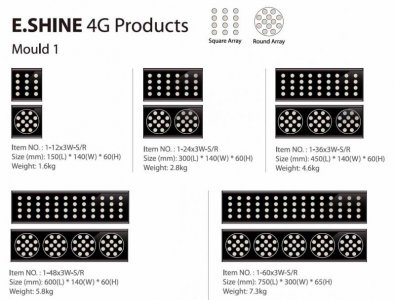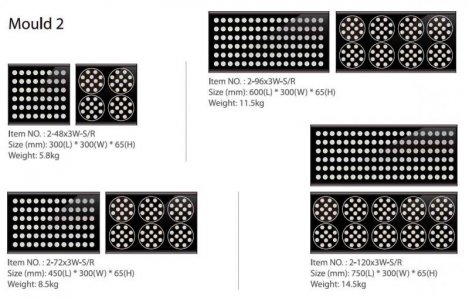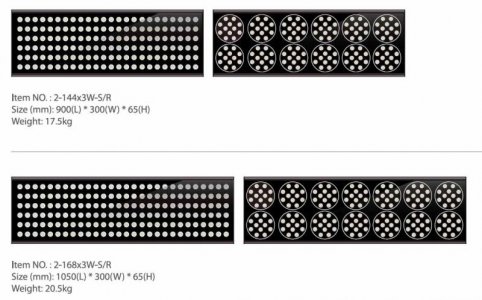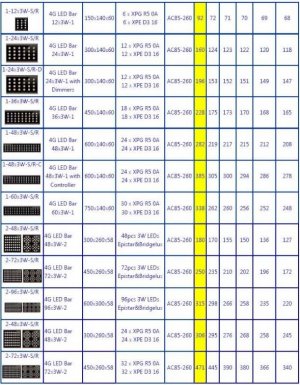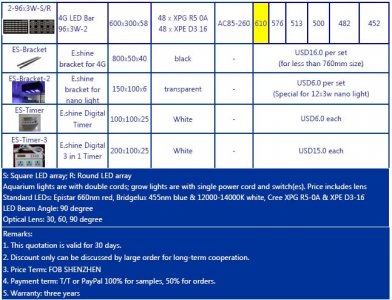My lights use epistar. I won't say they are top quality or anything, but I will say they 100% grow coral. I have seen more growth in my SPS corals in the month I've had these lights than I would see in 2 or 3 months with my ATI sunpower. With the frags I just got a couple weeks ago, you can actually see a small difference in growth day by day, at least around the base where it's encrusting.
there pads of variable is LED lights. Even the cheapest LED's if you put enough on the tank will give you good coral growth. But most people go to lLED's hoping on saving electricity and getting better florescent enhancement without loosing the reflective colors.
In all reality a quality 60 watt LED system would outperform a 117 Watt T-5 system and come close to a 250 Watt MH. However all LED systems are not the same. I have seen some 150 watt systems out there that are basicly equal to 156 Watt T-5 systems but still lack the reflective colors especial the reds.
What I realy hate is the they do not tell you exactly what LED's they are using. The royal blues and blues are on thing but when it comes to the whites there is a big difference.
In you tank a system with 4 Blues to 1 Nuetral white it will mook much whiter than a system with 3 Blues to one 1 Cool White. Yest so many comercial fixtures are running a 1 to 1 ratio which to me indicates that there whites ate not nearly as powerful as they should. On a 1 to 1 ratio with my neutral whites it is almost unnoticable if I turn off the blues.
Basicly thugh there are three seperate rating you can go with for LEDs
1. The growth they produce in the corals
2. The color balance to bring out the maximium florescense without washing out the reflective colors.
3. the actual amunt of electricity they are using to get the job done.
If you look at technicial data on specific LED's you will find that they are rated with lumns and the range is from 40 lumnins per watt all the way up to 130 lumins per watt. Unfortunatly this does not indicate color balance and generaly speaking the LED's with the best color balance.
An example just from CREE
XP-E-P3 CRI90 produces 74 Lumns per watt
XP-E-Q5 Neutral White produces 112 Lumns per watt
XP-E-R3 Cool White produces 122 Lumns per watt
Many Comercial fixtures are using the R-3 because it produces more lumns however it is a very blue LED and requires more to of them to bring out the reflective colors.
The other thing is the use of Warm whites to fool PAR meter readings. Warm whites are loaded with red light that is almost usless for corals and can eaisly cause burning in excess. Yet to give high PAR meter readings in there claims they will ocassionaly use them in some fixtures. This is where they put PAR meter readings ahead of actual coral growth to sell there fixtures based on the numbers. Note the terestial PAR lights which use the same PAR calculations as we do are mainly red to amber lights.






